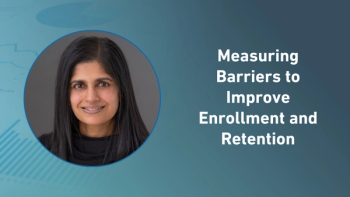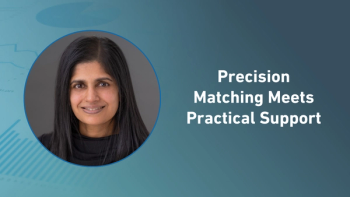What clinops professionals need to know
Early-stage research is vulnerable to bias due to the vast volume of biomedical data and the limits of time and resources. Sampling bias, familiarity bias, and positivity bias often shape decision-making, increasing R&D failure risk. AI tools are emerging as key supports—able to integrate structured and unstructured data, surface underrepresented findings, and highlight contradictory evidence. For clinical operations, this means earlier bias detection, faster evidence synthesis, and stronger trial designs built on more complete data.
Scientists must make sense of enormous volumes of biomedical data, most frequently pulled from academic journals, public databases, internal reports, and commercial repositories. Curating that information, contextualizing it, and identifying relevant data takes time, expertise, and thoughtful navigation.
The early-stage process demands time and carries risk. The systems researchers work within, and the judgement calls they must make under time and budget pressures, can introduce subtle forms of bias into research results. It’s a problem the scientific community continues to work to solve, for reasons ranging from validity of results to equity in healthcare.
Despite the best efforts of research teams, cognitive biases remain difficult to detect and mitigate. A report by SDG highlights that bias contributes to an estimated 90% failure rate in pharmaceutical R&D decision-making, particularly in pipeline prioritization, where contradictory research data may be missed or undervalued (SDG).
These teams aren’t careless by any means. Their workflows frequently contain measures designed to detect and minimize the impact of multiple types of bias. These scientists rely on manual searches, keyword filtering, institutional knowledge, and layered peer review systems to reduce bias-oriented complications.
These methods help, but their completeness can be hindered by a project’s budgeted time and human capacity. The volume, complexity, and fragmentation of data have made the search for objectivity harder.
That’s where strategic artificial intelligence (AI) applications are beginning to show promise, not as a replacement for human expertise, but as a way to expand what’s possible. Purpose-built models can now scan across millions of documents, integrate structured and unstructured inputs, and surface signals that might otherwise be buried. Applied strategically, AI can empower researchers to get to the right questions faster, and test ideas with more context, less noise, and fewer blind spots from the outset.
Turning information overload into a research advantage
For life sciences teams, the volume of early-stage research material is both a necessity and a burden. Sourcing relevant insights from academic papers, clinical trial registries, and proprietary databases is time-consuming. The longer the process takes, the more likely relevant findings are to be overlooked.
AI is helping to change that. When properly trained on biomedical content, language models can interpret study context, extract relationships across disparate data sources, and return results in clear, referenced formats.
Thoughtful AI approaches have the capacity to do more than speed up the process—they can reshape it entirely.
Instead of combing through thousands of papers by hand, researchers can engage with conversational tools that summarize and prioritize findings based on specific project goals. Structured and unstructured data, previously kept in separate silos, can be processed together, revealing patterns that manual reviews often overlook.
The combination of comprehensive data analysis and intelligent application of large language models enable a more efficient feedback loop. As new literature is published, purpose-built AI platforms ingest and integrate that information automatically, ensuring researchers are always working with the latest available evidence.
Critically, this automation allows teams to spend less of their project time gathering information and more of it applying informed scientific judgment.
That shift of effort also opens the door to more effective bias mitigation. When researchers are equipped with broader context earlier in the process, they can test assumptions more effectively and reduce the risk that blind spots will carry forward into the next phase.
In research, the most persistent forms of bias in early-stage research are sampling bias, familiarity bias, and positivity bias. Teams apply countermeasures to minimize these issues, but they can’t always be eliminated. AI gives researchers a new means to more thoroughly detect and counter these forms of bias before they negatively impact study outcomes.
Sampling bias: When the right data gets left behind
Even with careful planning, sampling bias remains a common and hard-to-detect challenge in early-stage research. It occurs when the data used to inform a study doesn’t fully represent the broader population or research landscape.
This isn’t due to teams’ oversight, but to practical limitations: access restrictions, time constraints, and the fragmentation of data across sources.
Researchers frequently account for this by triangulating results across journals, real-world evidence, internal data, and known gaps. But with thousands of potential sources and limited time, even diligent reviews may overlook findings from understudied populations or divergent outcomes buried in lesser-known publications.
AI is particularly well-suited to this challenge. Purpose-built models can process millions of documents such as clinical trials, observational data, registries, and more. They can then identify relevant insights that match a study’s focus or patient profile. By doing so, they help surface perspectives that might otherwise be left out, including edge-case data and findings from underrepresented groups.
This doesn’t replace the researcher’s expertise. Rather, it equips teams with a stronger and more comprehensive starting point. When AI is applied thoughtfully, it helps fill in what traditional sampling efforts may miss. This gives scientists a more complete foundation for decisions down the line.
Breaking the loop of familiarity bias
Deep expertise is a cornerstone of good science, but it can also create blind spots. Familiarity bias happens when researchers give disproportionate weight to the studies, sources, or ideas they’re most familiar with, often missing or even ignoring newer or less conventional findings.
It’s a subtle form of bias that stems from rich experience: the more deeply someone knows a field, the more likely they are to look for patterns that confirm what they already believe.
Life sciences teams already work to avoid this too. Peer review, internal checks, and collaborations with external experts are all designed to challenge assumptions and introduce broader perspectives. Still, familiarity bias can persist, especially in fast-moving fields where even the most current understanding may soon be outdated.
AI can play a unique supporting role here. Rather than relying on manual recall or known sources, AI systems review the full landscape by integrating updates across journals, databases, and preprints. When properly applied, these models retrieve expected material, but also highlight results that fall outside the norm: contradictory evidence, evolving standards of care, or alternative hypotheses.
The value lies not in automation, but in augmentation. With AI bringing fresh or dissenting evidence to the table, researchers gain a clearer picture of where their assumptions may be narrowing the view. That added perspective can reshape study design, guide new lines of inquiry, or prevent costly detours based on outdated consensus.
Surfacing what doesn’t work: The role of AI in reducing positivity bias
In research, success stories tend to dominate the narrative. Studies with statistically significant or positive results are far more likely to be published, cited, and circulated, creating a well-known phenomenon called positivity bias.
But what’s left out of the record is just as important. Null or negative findings often contain critical information, particularly when they challenge prevailing assumptions or help researchers avoid repeating past mistakes.
Many researchers invest substantial time reviewing journals, scanning clinical trial registries, or chasing down unpublished results to ensure they’re not overlooking key data. But these efforts are time-consuming and limited by what can be discovered manually.
This is another place where AI offers meaningful support. Properly calibrated models can index a broader range of sources, including hard-to-find or unpublished data, and bring underrepresented results into focus. They can detect when outcomes are missing from the published record, identify contradictory findings, or surface studies that failed to meet endpoints but still contain valuable insights.
In doing so, AI helps level the evidence landscape. Rather than amplifying only studies that succeeded, it supports a more balanced view. That view reflects the full spectrum of study outcomes and gives researchers the tools to make better-informed decisions. When negative results are visible and contextualized, teams can de-risk their strategies, refine hypotheses, and build stronger therapeutic programs from the outset.
Guardrails, not shortcuts: AI’s role in scientific progress
Bias in early-stage research is a practical challenge with real, problematic implications for scientific progress, patient outcomes, and resource allocation. Researchers already apply rigorous processes to reduce it, but those efforts come at predictable costs: more time, more people, and often, more risk of missing critical signals along the way.
Strategically applied AI offers a path to reduce that burden. By analyzing massive volumes of information across data sources, AI can uncover underrepresented findings, surface contradictory evidence, and help neutralize dominant narratives that skew objectivity. It leads to more than a faster and more efficient process for research. It leads to a more complete process.
The opportunity ahead is to use AI not simply to accelerate the pipeline, but to elevate the integrity of the evidence it produces. Better inputs, broader perspectives, and smarter workflows can sharpen scientific insight before it enters the next stage of development.
That said, trust remains critical. Model transparency, reproducibility, and data quality must continue to improve. Many AI systems still operate as black boxes, draw from uneven datasets, or fall short when interpreting the complexity of biological systems. These are valid concerns, but they are also very solvable with thoughtful applications.
By designing systems that align with how scientists work and think, AI developers can help life sciences teams spend less time reacting to bias and more time preventing it. In doing so, AI becomes not a shortcut, but a safeguard, and a key partner in building the next era of evidence-based discovery.
Stavroula Ntoufa, Director of Scientific Affairs, Causaly





